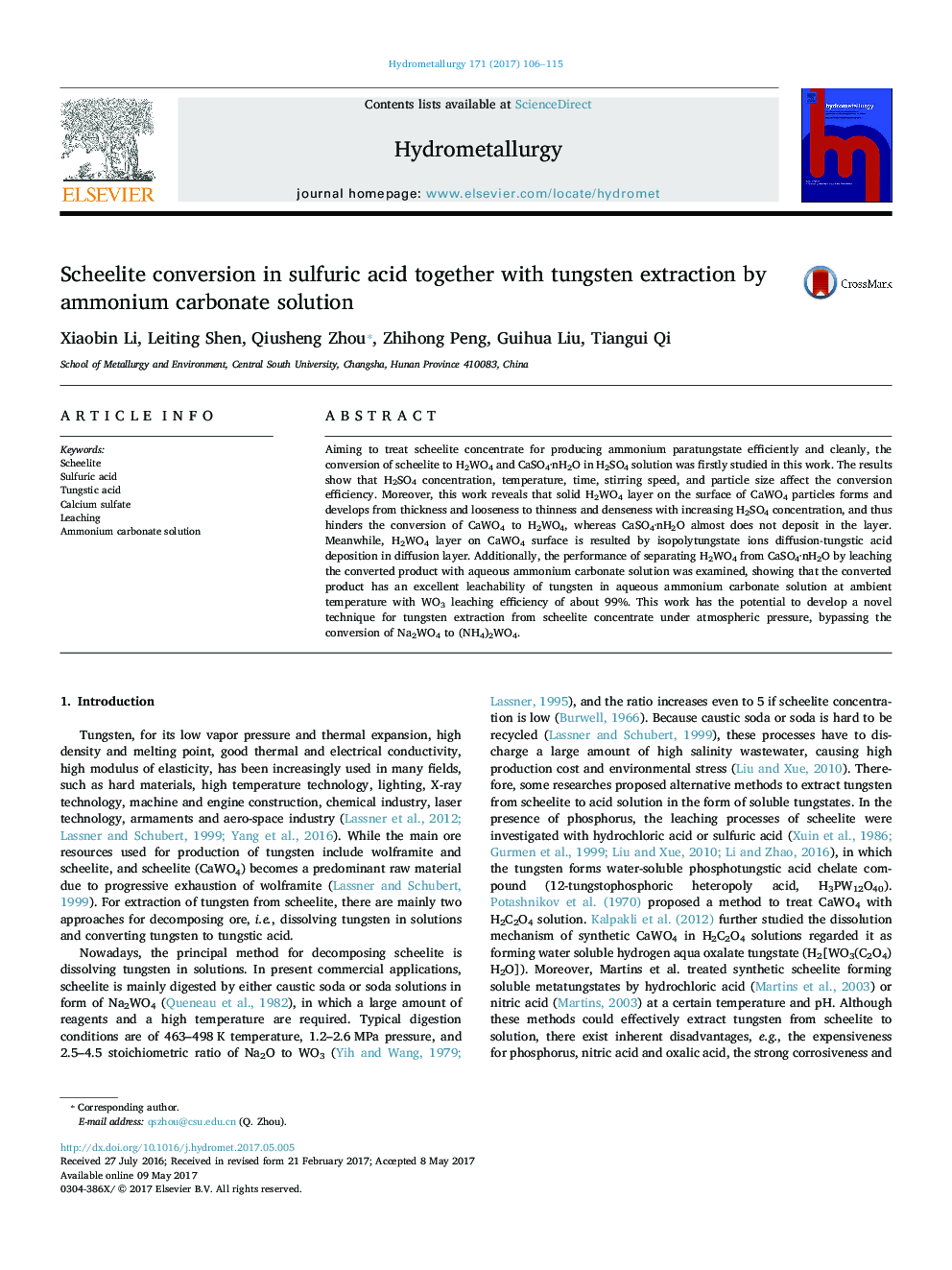| Article ID | Journal | Published Year | Pages | File Type |
|---|---|---|---|---|
| 4769266 | Hydrometallurgy | 2017 | 10 Pages |
Abstract
Aiming to treat scheelite concentrate for producing ammonium paratungstate efficiently and cleanly, the conversion of scheelite to H2WO4 and CaSO4·nH2O in H2SO4 solution was firstly studied in this work. The results show that H2SO4 concentration, temperature, time, stirring speed, and particle size affect the conversion efficiency. Moreover, this work reveals that solid H2WO4 layer on the surface of CaWO4 particles forms and develops from thickness and looseness to thinness and denseness with increasing H2SO4 concentration, and thus hinders the conversion of CaWO4 to H2WO4, whereas CaSO4·nH2O almost does not deposit in the layer. Meanwhile, H2WO4 layer on CaWO4 surface is resulted by isopolytungstate ions diffusion-tungstic acid deposition in diffusion layer. Additionally, the performance of separating H2WO4 from CaSO4·nH2O by leaching the converted product with aqueous ammonium carbonate solution was examined, showing that the converted product has an excellent leachability of tungsten in aqueous ammonium carbonate solution at ambient temperature with WO3 leaching efficiency of about 99%. This work has the potential to develop a novel technique for tungsten extraction from scheelite concentrate under atmospheric pressure, bypassing the conversion of Na2WO4 to (NH4)2WO4.
Related Topics
Physical Sciences and Engineering
Chemical Engineering
Chemical Engineering (General)
Authors
Xiaobin Li, Leiting Shen, Qiusheng Zhou, Zhihong Peng, Guihua Liu, Tiangui Qi,
